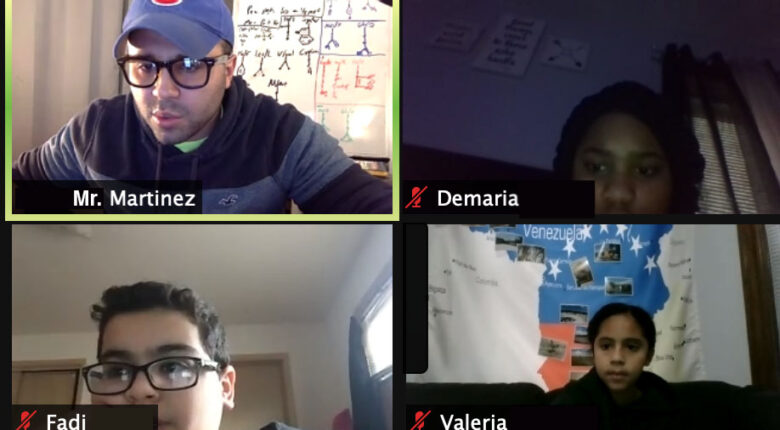
Adapting Our Fall Programming Amidst COVID-19
By the spring of 2020, we knew that our summer program would have to be quite different than in years past. Thankfully, the changes we made for summer were strategic, research-informed, and ultimately successful. With the threat of COVID-19 greater than ever, we used the same structure for our fall programming. Here’s how we adapted our summer program and how the fall session will take those adaptations further.
When we realized that in-person programming wouldn’t be possible, we began developing a new model informed by a thorough review of published virtual learning best practices, focus groups, and interviews with teachers, parents, and school administrators. Our research resulted in fully virtual model that included:
- Limited screen time: The Illinois State Board of Education (ISBE) recommends no more than three hours of screen time per day. Following this guideline reduced our overall course load from seven courses to just four. As a result, we prioritize quality over quantity, combining courses when possible and planning carefully to ensure that every moment of class time was maximized.
- Increased planning time: Every teacher had 13 hours of paid planning time in addition to 3 hours of student and parent “contact time” per week. Excellent planning ensured productive class sessions and kept both students and parents better engaged.
- Consistent class experience: We held two live classes each day, from 9:30am – 12:05pm and 1:10 – 2:20pm, to provide reliable structure during a chaotic and unpredictable time. Daily morning assemblies, live activities, and liberal use of chat functionality and breakout rooms kept kids socially engaged.
- Weekly surveying: We knew that students’ and families’ needs would be greater and broader this year, so we asked students, teachers, teaching assistants, and parents to answer a weekly 15-minute survey to make sure we were taking the right steps to meet their needs both within the classroom and beyond.
- Beyond-the-classroom assistance: Our surveys showed that 40% of our students did not have the technology tools they needed to thrive. As a result, we distributed 131 laptops, 80 WiFi hotspots, and 374 school supply kits to families who needed them. Food security was also a common struggle; we invested $10k per month in grocery assistance.
- Expanded support: We increased support for students to meet high school application deadlines and prepare for making a high school choice. Modifying the class schedule and staffing, adding staff, and holding more informational sessions helped us achieve this. We also increased day-to-day support for students; virtual Tech TAs offered technical assistance at any time during the class day while social workers and tutoring opportunities were made available to any student who needed them.
Thanks to our detailed planning, our first-ever virtual session was deemed a success by teachers, students, and parents. 97% of students reported that they were happy they participated this year and realized academic benefits due to their participation; 87% of parents said their students were very engaged with the program. Teachers also thought the program was worthwhile, with 90% reporting that they were pleased with student progress.

As we prepared for a fully virtual fall session, we surveyed our teachers, students, and their parents regularly to assess their ongoing needs. Those surveys indicated that we should continue to provide students with opportunities for social engagement, focus on social-emotional learning throughout all curriculums, and expand our high school choice assistance, which is exactly what we’ve done. We expect that we will continue to play a larger-than-usual role in caring for families’ basic needs, such as food access, in upcoming sessions. We’re grateful that in this difficult time, we are able to provide High Jump families and teachers with the support they need.
High Jump is just the beginning of a successful educational journey for many students. More than ever, we must continue to build equitable learning opportunities for Chicago’s middle school youth.

